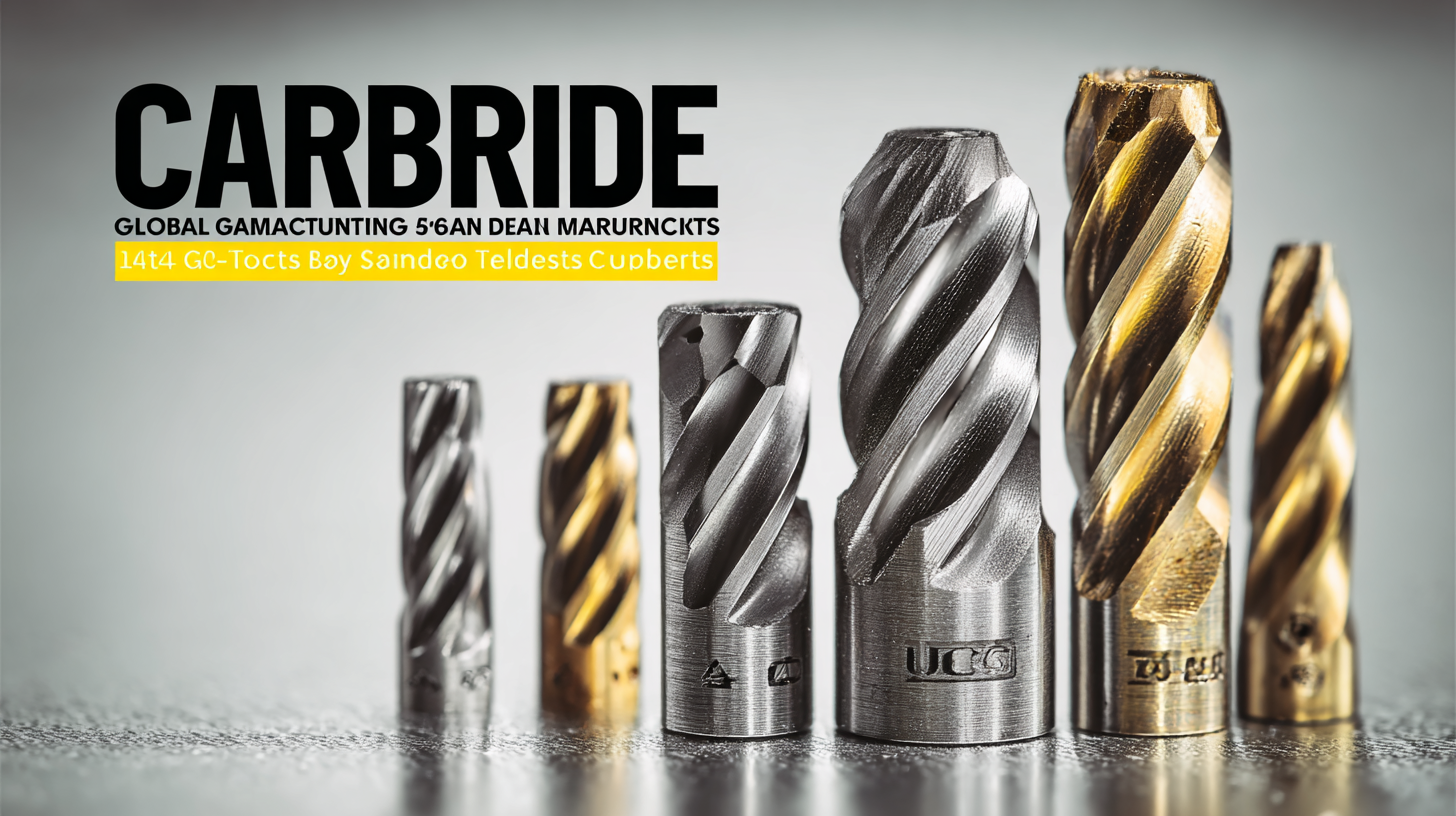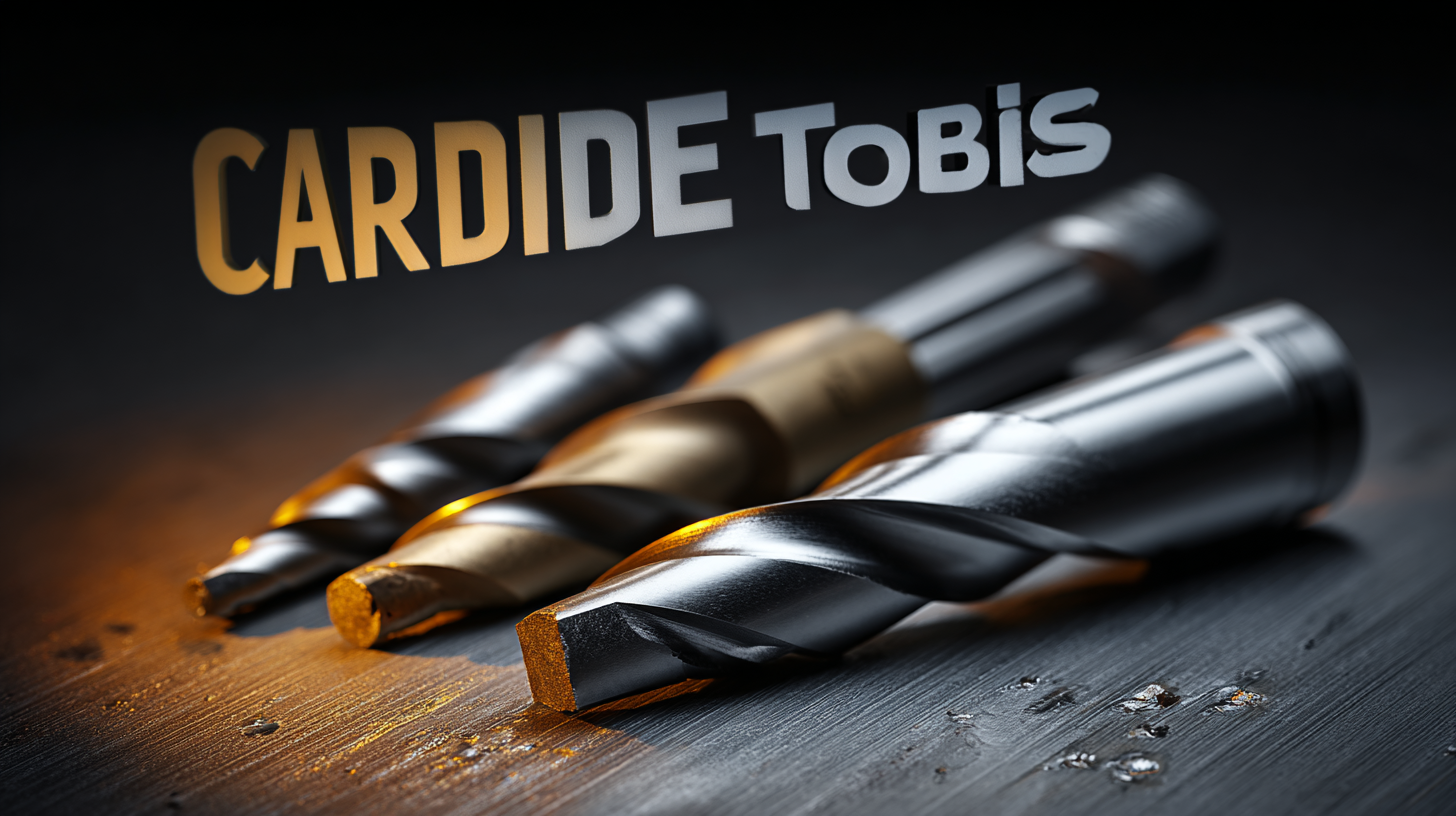SUNDI TOOLS
- Copyright © Wuxi Sundi Precision Tools Co.,LTD All rights reserved.
- Site Map
 In today's fast-paced manufacturing landscape, understanding global manufacturing standards is crucial for ensuring the effectiveness and reliability of Carbide Cutting Tools. According to a recent report by Research and Markets, the global carbide tool market is expected to reach USD 16.6 billion by 2025, growing at a CAGR of 6.3% during the forecast period. This growth is driven by the increasing demand for precision machining in industries such as automotive and aerospace, where Carbide Cutting Tools play a pivotal role in enhancing operational efficiency. Furthermore, adherence to international standards like ISO 9001 or ISO/TS 16949 not only bolsters quality control but also fosters innovation within the industry. As manufacturers strive to meet these evolving standards, a clear understanding of the best practices and benchmarks for Carbide Cutting Tools becomes essential for maintaining competitive advantage in a global marketplace.
In today's fast-paced manufacturing landscape, understanding global manufacturing standards is crucial for ensuring the effectiveness and reliability of Carbide Cutting Tools. According to a recent report by Research and Markets, the global carbide tool market is expected to reach USD 16.6 billion by 2025, growing at a CAGR of 6.3% during the forecast period. This growth is driven by the increasing demand for precision machining in industries such as automotive and aerospace, where Carbide Cutting Tools play a pivotal role in enhancing operational efficiency. Furthermore, adherence to international standards like ISO 9001 or ISO/TS 16949 not only bolsters quality control but also fosters innovation within the industry. As manufacturers strive to meet these evolving standards, a clear understanding of the best practices and benchmarks for Carbide Cutting Tools becomes essential for maintaining competitive advantage in a global marketplace.
The evolution of carbide cutting tools has been remarkable over the past few decades, driven by advancements in materials science and manufacturing technologies. As we look toward 2025, the trends suggest a continued emphasis on precision and efficiency. Modern carbide cutting tools are engineered not only for durability but also for enhanced performance in a variety of applications, from aerospace to automotive manufacturing. Innovations such as coated carbide inserts and micro-grain materials are enabling manufacturers to achieve tighter tolerances and longer tool life, significantly reducing costs in high-volume production settings.
Moreover, the integration of smart technology into manufacturing processes has begun to transform how carbide cutting tools are utilized. Machine learning and data analytics are now being applied to optimize cutting parameters and monitor tool wear in real-time. This shift towards intelligent manufacturing will foster a new generation of carbide cutting tools that can self-adapt to different materials and machining conditions, ensuring optimal performance. As we approach 2025, it is evident that the convergence of advanced materials and smart manufacturing processes will play a crucial role in shaping the future of carbide cutting tools, setting new standards for quality and efficiency in global manufacturing.
| Standard | Description | Material Composition | Hardness (HRA) | Applications |
|---|---|---|---|---|
| ISO 9001 | Quality management systems | Cemented carbide (WC-Co) | 90-92 | Machining of metals, plastics |
| DIN 4965 | Carbide cutting tool standards | WC with Co and TiC | 87-93 | Woodworking, metal forming |
| JIS B 4061 | Japanese industrial standards for carbide tools | WC-VC, Co | 88-90 | Metalworking, precision machining |
| ASTM A100 | Specification for tungsten carbide | WC-Ni | 90-92 | Cutting, drilling applications |
The production of best carbide cutting tools is heavily influenced by various global manufacturing standards that ensure quality, safety, and efficiency. One of the key standards is ISO 9001, which focuses on quality management systems. Adopting this standard allows manufacturers to consistently meet customer and regulatory requirements, improving customer satisfaction and trust in their products. This is particularly critical in the highly competitive tool industry, where precision and reliability are paramount.
Another important standard is ISO 14001, which deals with environmental management systems. This standard encourages manufacturers to minimize their environmental impact by improving resource efficiency and reducing waste. Compliance with ISO 14001 not only enhances a company's reputation but also aligns with the growing demand for sustainable practices in manufacturing. By adhering to these standards, carbide tool producers can not only improve their operational processes but also position themselves as leaders in environmentally responsible manufacturing.
This chart showcases the percentage impact of various global manufacturing standards on carbide cutting tool production. These standards are crucial for ensuring quality and consistency in manufacturing processes.
The cutting tool industry is undergoing significant transformation, driven by technological advances that enhance efficiency and performance. Recent data from a market research report reveals that the global cutting tools market is projected to reach $32 billion by 2026, with a compound annual growth rate (CAGR) of 6% from 2021. This surge is attributed to the growing demand for precision manufacturing and the increasing complexity of machining operations that demand higher-quality cutting tools.
Innovative technologies, such as additive manufacturing and advanced coatings, are reshaping the design and functionality of carbide cutting tools. For instance, the introduction of PVD (Physical Vapor Deposition) coatings has reportedly improved tool life by up to 50%, allowing manufacturers to achieve greater productivity with minimal downtime. Additionally, the integration of IoT (Internet of Things) solutions in machine tools facilitates real-time monitoring, leading to predictive maintenance and optimized machining processes, which can significantly reduce operational costs by 15% according to industry analysts. As these advancements continue to evolve, the cutting tools sector remains poised to enhance manufacturing efficiency on a global scale.
In the ever-evolving landscape of manufacturing, the sustainability of carbide tool production is becoming increasingly paramount. As businesses set their sights on 2025, emerging trends indicate a growing commitment to environmentally-friendly practices. This involves minimizing waste during the manufacturing process by adopting lean production methodologies and employing advanced technologies that recycle materials without compromising the quality of the tools. Manufacturers are also focusing on the sustainable sourcing of raw materials, ensuring that the carbide they use is derived from responsibly managed resources.

As these sustainability practices gain momentum, companies are likely to distinguish themselves in a competitive market by capitalizing on eco-friendly innovations that meet the rising consumer demand for responsible manufacturing.
When it comes to carbide cutting tools, understanding the manufacturing standards that vary by region is crucial for ensuring quality and performance. North American manufacturers often adhere to stringent guidelines set forth by organizations such as ANSI and ASTM, emphasizing reliability and consistency. These standards dictate everything from the raw materials used to the final inspection processes, resulting in cutting tools that often excel in durability and precision.
In contrast, European manufacturers might follow the ISO standards, which place a strong emphasis on sustainability and environmental impact alongside performance metrics. For example, European cutting tools may prioritize recyclable materials and energy-efficient manufacturing processes. Meanwhile, Asian manufacturing standards can sometimes be less rigid, focusing on cost-effectiveness while striving for adequate quality. This regional variation highlights the importance for companies to not only understand these standards but also to consider them when making decisions on sourcing materials and selecting suppliers, ultimately influencing the effectiveness of their operations in the global market.
